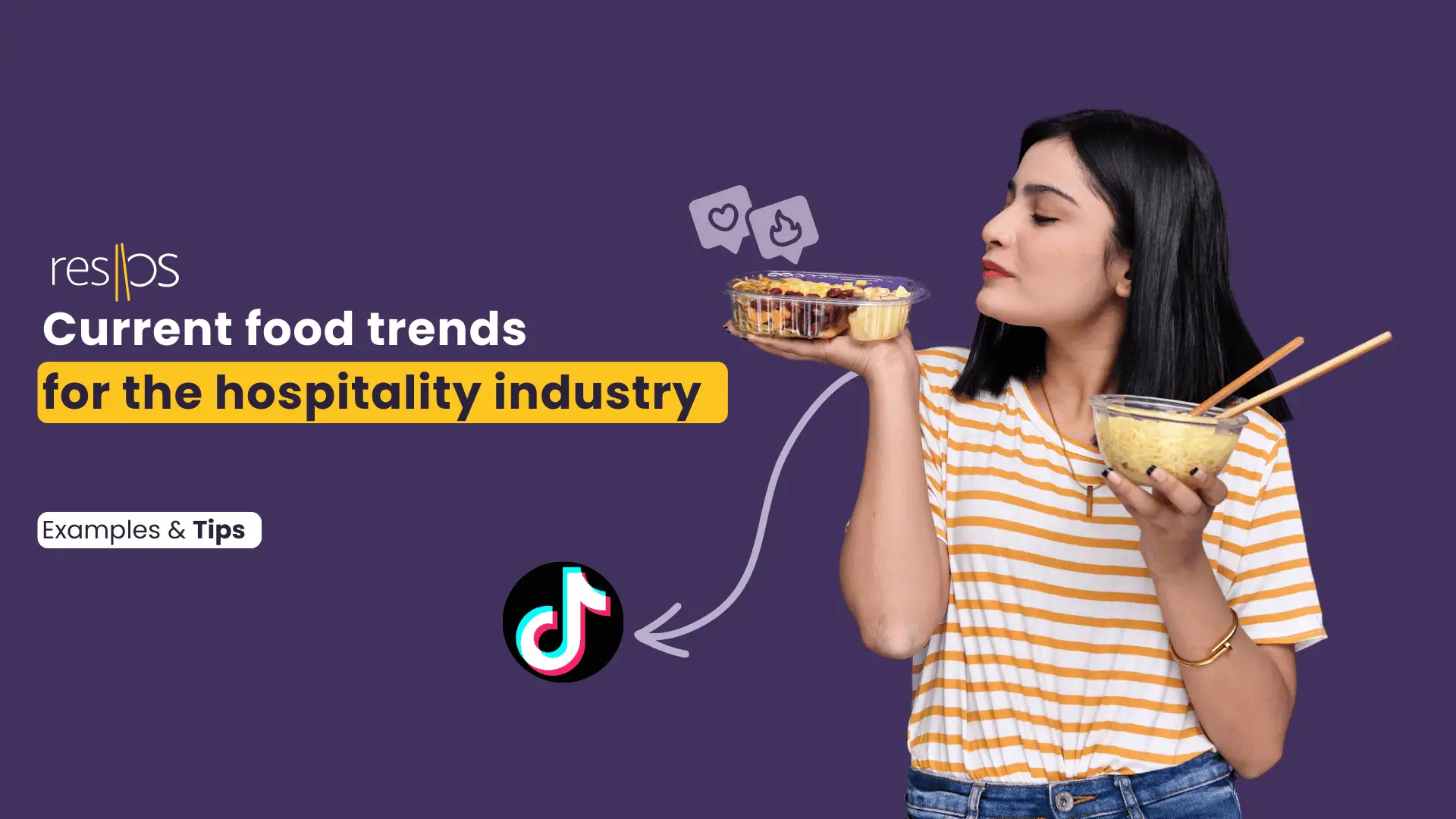Welcome to the exciting world of 2024 food trends! Whether you’re a passionate foodie, a dedicated chef, or a savvy restaurant owner, staying on top of the latest trends can upgrade your culinary venue and keep your menu fresh and appealing.
Let’s learn about the hottest food trends for this year so you can keep up with your customers and your business.
Reducetarian eating 🌱
Reducetarianism encourages reducing meat, dairy, and animal products without eliminating them entirely. This flexible approach allows for occasional consumption, promoting health, environmental benefits, and ethical eating without committing to a fully plant-based diet.
Balancing health and sustainability, reducetarianism encourages reducing meat consumption without fully committing to vegetarianism or veganism. This moderate approach is gaining popularity, offering a variety of plant-based dishes that don’t compromise on taste.
It’s a great way to cater to health-conscious diners who want to enjoy their meals while being mindful of their health and the environment.
Benefits: Appeals to health-conscious diners, supports sustainability efforts.
Examples: Plant-based burgers, vegetable-centric entrées, and mixed protein dishes.
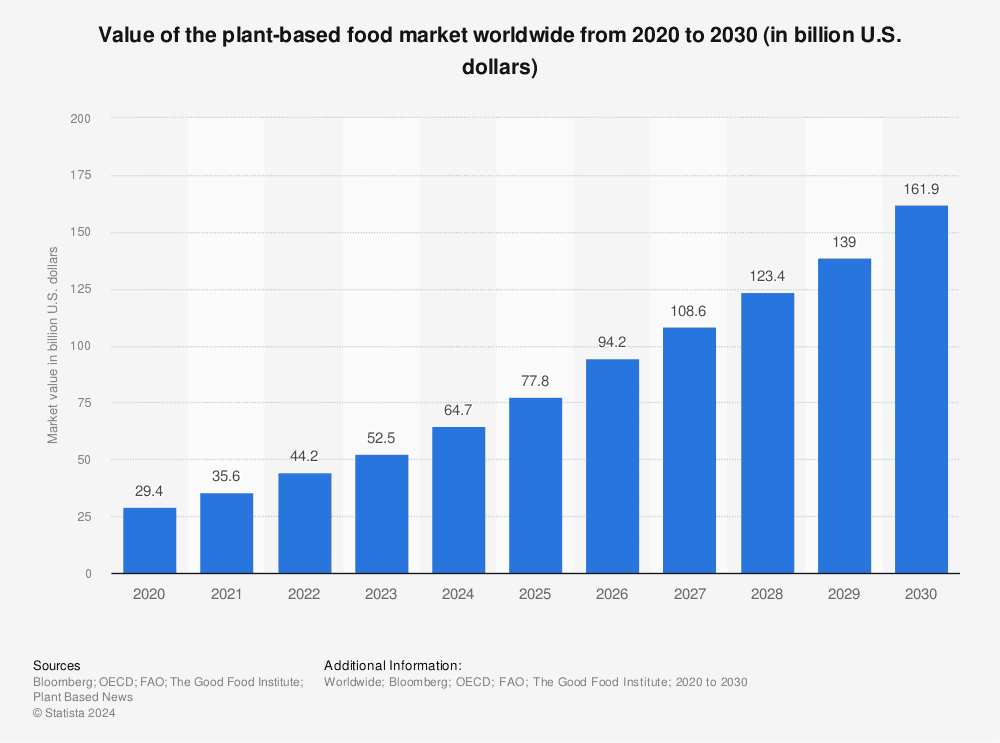
The plant-based food market is rapidly growing, projected to reach $161.9 billion by 2030, up from $29.4 billion in 2020. This growth highlights the increasing demand for plant-based options and the potential benefits for restaurants that adjust their menus accordingly.
Check out the latest trends for 2025 👇
Culinary upcycling ♻️
With sustainability in the spotlight, culinary upcycling involves using food scraps and trimmings creatively to minimise waste. This eco-friendly trend not only helps the planet but also introduces unique flavours and textures to dishes, making the most of every ingredient. Think of creating a delicious soup from vegetable peels or a flavourful broth from meat bones.
Impact: Promotes sustainability and reduces food costs.
Examples: Vegetable peel soups, bone broths, bread crumb toppings.
Ideal for: Small to medium-sized restaurants and cafés with main value of sustainability and reducing food waste.
Target group: Eco-conscious diners, sustainability advocates, and budget-conscious consumers
Healthy pleasures 🍏
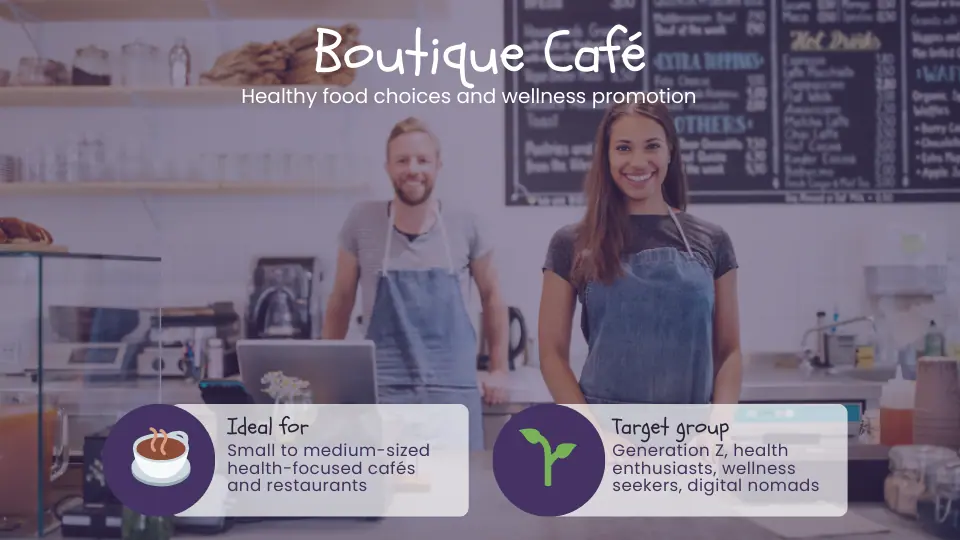
Combining health and indulgence, healthy pleasures focus on creating dishes that are both nutritious and delicious. This trend appeals to consumers looking to balance their diet without sacrificing taste. Incorporate ingredients like avocado, quinoa, and dark chocolate to create mouth-watering yet healthy options.
Ingredients: Avocado, quinoa, dark chocolate, nuts.
Examples: Avocado toast with microgreens, quinoa bowls with roasted vegetables, dark chocolate-covered nuts.
Zero-waste cooking 🌍
Zero-waste cooking takes culinary upcycling to the next level by ensuring every part of an ingredient is used. From root-to-stem cooking to creating stocks from leftover bones, this trend is all about maximising resources and minimising waste. It’s a great way to promote sustainability while also offering unique and creative dishes.
Practices: Root-to-stem cooking, making stocks from bones, using citrus peels in desserts.
Benefits: Promotes sustainability and creativity in the kitchen.
Functional foods 💪
Functional foods are designed to provide health benefits beyond basic nutrition. This includes foods fortified with vitamins, minerals, probiotics, and fibres that can aid in digestion, boost immunity, and improve overall health. Examples include:
- Turmeric lattes
- Kombucha
- Chia seed puddings
These foods cater to health-conscious consumers looking to enhance their well-being through their diet.
Appeal: Attracts health-conscious consumers looking to enhance their well-being through diet.
💡Fact: The market for functional and natural health foods is expected to grow significantly in the coming years, reaching $38.5 billion by 2033, up from $23.5 billion in 2023. This trend indicates a rising interest in health-focused dining options.

Hyper-local sourcing 🌾
Hyper-local sourcing involves sourcing ingredients from local farms and producers, reducing the carbon footprint and supporting local economies. This trend emphasises the importance of fresh, seasonal, and sustainable ingredients. Restaurants adopting this practice often highlight the origins of their ingredients on their menus, adding a story behind each dish.
Practices: Partnering with local farms, featuring seasonal dishes, highlighting ingredient origins on the menu.
Benefits: Ensures freshness, supports local economy, and appeals to eco-conscious diners.
International BBQ 🍖
Global flavours are sizzling on the BBQ scene. From Korean and Thai techniques to Mediterranean spices, international BBQ is all about blending traditional methods with exotic spices. This trend is a sure fire way to attract adventurous eaters looking for something new.
Consider offering dishes like Korean BBQ beef or Thai-style grilled chicken to add a global twist to your menu.
Techniques: Korean BBQ, Thai grilled chicken, Mediterranean spiced ribs.
Menu ideas: Offer fusion BBQ dishes that combine local favourites with global influences
Spicy bakes 🌶️
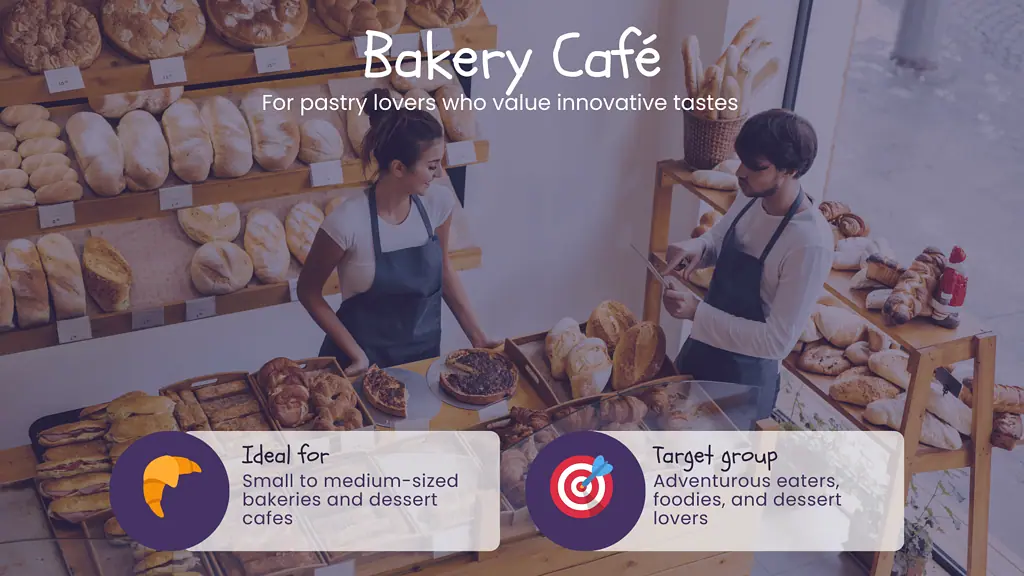
Heating up the baking scene, spicy bakes are taking traditional sweets to a new level. Imagine chipotle-infused brownies or cayenne pepper cupcakes. This trend adds an unexpected twist to your favourite desserts, perfect for those who love a kick with their sugar fix. It’s a great way to surprise and delight your customers with familiar yet exciting flavours.
Examples: Chipotle brownies, cayenne pepper cupcakes, Chili-infused cookies.
Impact: Adds excitement and novelty to dessert menus, appealing to adventurous eaters
Girl dinner 🍽️
The girl dinner trend, popularised on social media, focuses on simple, satisfying meals that require minimal effort. Think of it as a glorified snack plate, combining favourite nibbles like cheeses, fruits, and bread into a delightful, casual dining experience. This trend appeals to those looking for a quick yet nourishing meal without the hassle of cooking.
Components: Cheese, fruits, bread, nuts, deli meats.
Advantages: Easy to prepare, appeals to diners seeking quick, light meals.
Fusion cuisine 🔀
2024 is the year of creative mash-ups. Fusing beloved dishes, like combining pizza with mac and cheese or mixing flavours from different cuisines, is set to captivate home cooks and diners alike. This trend encourages experimentation and fun in the kitchen, leading to unique and memorable meals.
Examples: Sushi burritos, taco pizzas, ramen burgers.
Benefits: Adds novelty and fun to the menu, attracts diners looking for unique experiences.
Pantry staples 🌟
High-impact pantry staples are becoming essential. Ingredients like black vinegar, fish sauce, and sesame oil are transforming simple dishes into gourmet experiences. Stocking a well-rounded pantry allows for quick, flavourful meals that impress without extensive preparation. Make sure your pantry is always stocked with these versatile ingredients to keep your menu diverse and exciting.
Staples: Black vinegar, fish sauce, sesame oil, miso paste.
Impact on Taste: Enhances the flavour profile of basic dishes, making them more appealing.
Nostalgic comfort foods 🥧
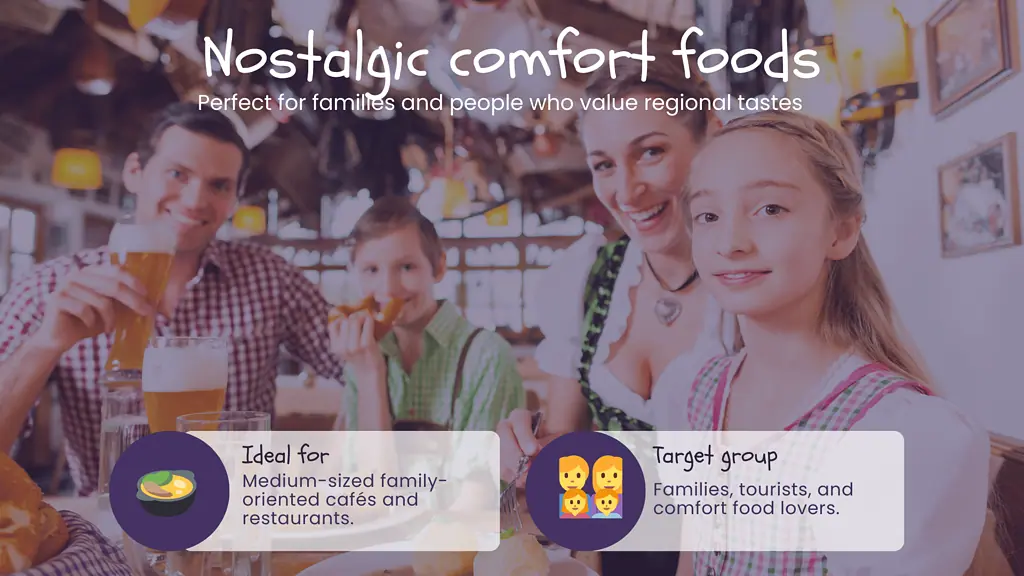
In times of uncertainty, people often turn to comfort foods that remind them of happier times. This trend involves reinventing classic dishes with a modern twist. Think of gourmet versions of mac and cheese or artisanal takes on shepherd’s pie. Nostalgia combined with quality ingredients can evoke a sense of warmth and familiarity in your menu.
Examples: Gourmet mac and cheese, artisanal shepherd’s pie, truffle-infused mashed potatoes.
Appeal: Evokes a sense of warmth and familiarity, creating a homely dining experience.
Figuring out what your customers want
Understanding your customers’ preferences is crucial for staying relevant and successful. Here are some strategies to figure out what your customers want:
- Surveys and feedback: Regularly ask for feedback through review form links or comment cards. This direct input can provide valuable insights into what dishes are hits or misses.
- Social media listening: Monitor social media platforms to see what your customers are talking about and what trends they are following.
- Reports and data analysis: Review your sales data to identify which items are popular and which are not. Seasonal variations can also provide clues about changing preferences.
- Customer profiles: Use customer profiles to track preferences and tailor marketing efforts.
Restaurant booking system like resOS offers detailed customer data collection to help you understand dining habits and preferences better.
Using resOS for customer data collection
Customer data is important for restaurant owners. With resOS, you can:
Create detailed customer profiles: Track individual customer preferences, dietary restrictions, and favourite dishes.
Personalise marketing efforts: Use the collected data to tailor your promotions and communications, making your customers feel valued and understood.
Provide a better customer experience: Anticipate customer needs and preferences, leading to a more personalised dining experience that boosts loyalty and satisfaction.

Know your diners with our app
Track preferences, tailor marketing, and enhance the dining experience with resOS.

Key takeaways for restaurant owners and chefs
- Stay innovative: Incorporate these trends into your menu to attract trend-savvy diners.
- Promote sustainability: Highlight your commitment to eco-friendly practices like culinary upcycling and zero-waste cooking.
- Embrace fusion: Experiment with international flavours and ingredient mash-ups to keep your offerings exciting.
- Simplify: Offer dishes that use pantry staples, making it easier for customers to recreate their dining experience at home.
- Balance health and indulgence: Combine nutritious ingredients with indulgent flavours to appeal to health-conscious diners.
- Support local: Emphasise hyper-local sourcing to provide fresh, seasonal ingredients and support local farmers.
- Know your customer: Utilise tools like resOS to gather and analyse customer data, ensuring you meet their needs and preferences effectively.
By embracing these trends, you can delight your customers and keep them coming back for more. Happy cooking and dining! 🍴👨🍳👩🍳
